[javascript protected email address]
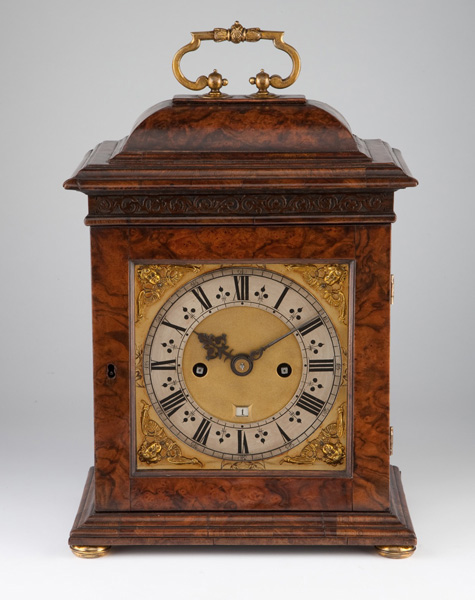
Benjamin Johnson, London

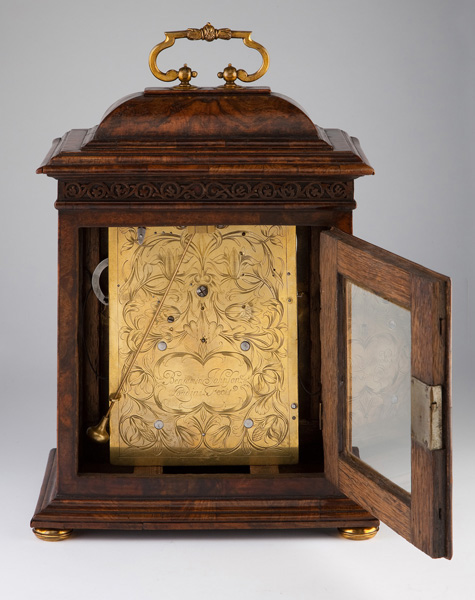
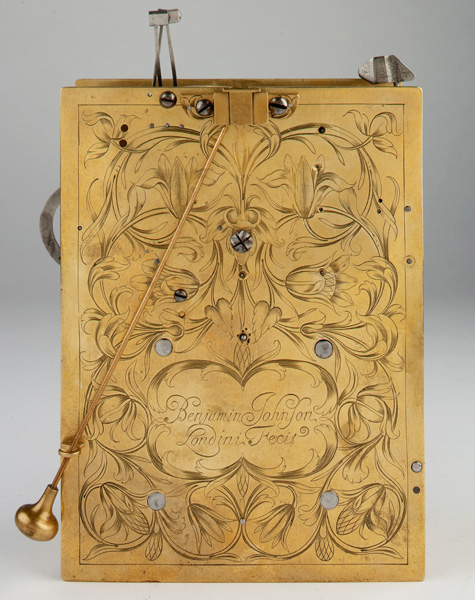
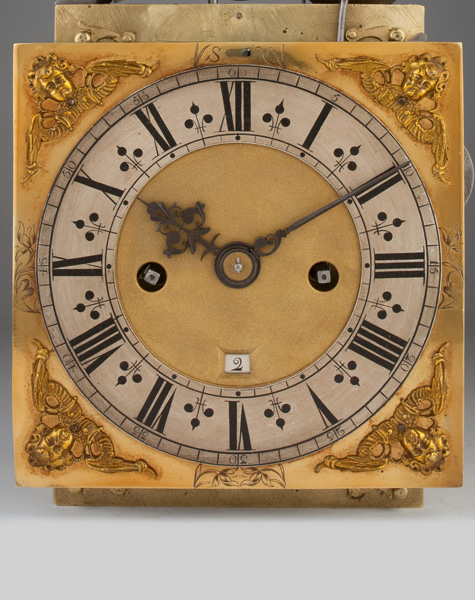
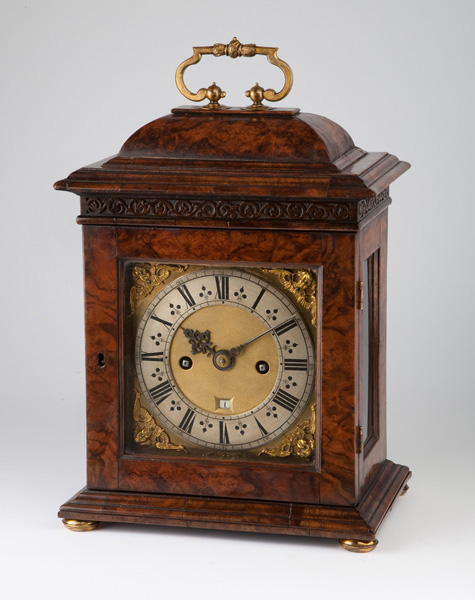
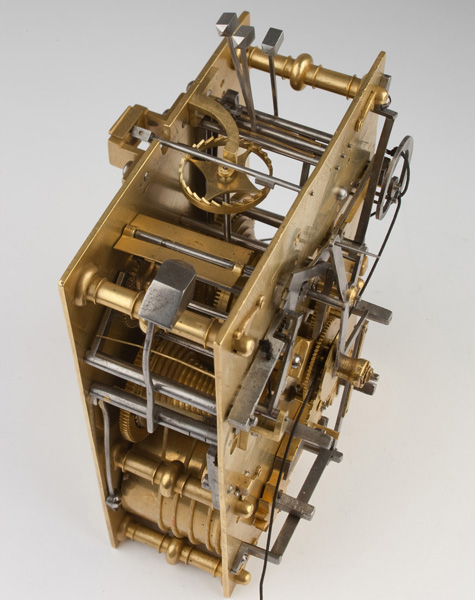
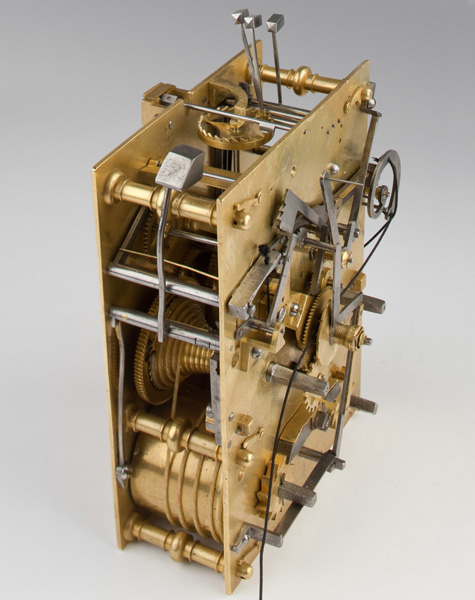
Circa 1690
Sold
12½ inches high
A rare and small walnut striking table clock with quarter repeat. The case is surmounted by a foliate-tied gilt-brass handle above a cushion-moulded top with foliate-pierced gallery frieze frets below. The sides are glazed and the moulded base rests on brass bun feet. The 6 inch square brass dial has a silvered chapter ring with Roman & Arabic chapters and well-pierced blued steel hands, the matted centre is set with a calendar aperture above chapter VI. There are well-cast gilt-brass winged cherub spandrels to each angle with foliate engraving between and a strike/silent lever is above chapter XII. The fine quality movement has slender brass plates held together by seven latched and ring-turned pillars. Twin gut fusees to the strike and going train, the latter with restored verge escapement. The hours are struck on a single bell whilst the restored pull quarter repeat system strikes on three bells via three hammers. The backplate is beautifully engraved with tulip heads within symmetrical scrolling foliage and signed Benjamin Johnson Londini Fecit within a scrolling cartouche. The movement is secured within the case by means of two turn-screws behind the dial plate. At some point, probably in the late 18th century, a pair of brass movement securing brackets were added, these were removed and the vacant holes in the backplate were filled. The corresponding case screw holes were left open on the inside whilst the veneer holes were filled. Provenance • 1981 Private collection Hampshire According to records Benjamin Johnson was never formally a member of the Clockmakers’ Company, but apparently ‘accepted’ by them. He is recorded having taken in two apprentices; William Moore in 1693 and James Kempe in 1704. Other work known by Johnson includes a long- case clock with a 11⁄4-seconds pendulum. Patently a clever clockmaker, the highly accomplished movement of this clock bears close resemblance to work from the ‘Knibb school’. The dial however bears closer likeness to the work of such makers as John Ebsworth and John Clowes.
